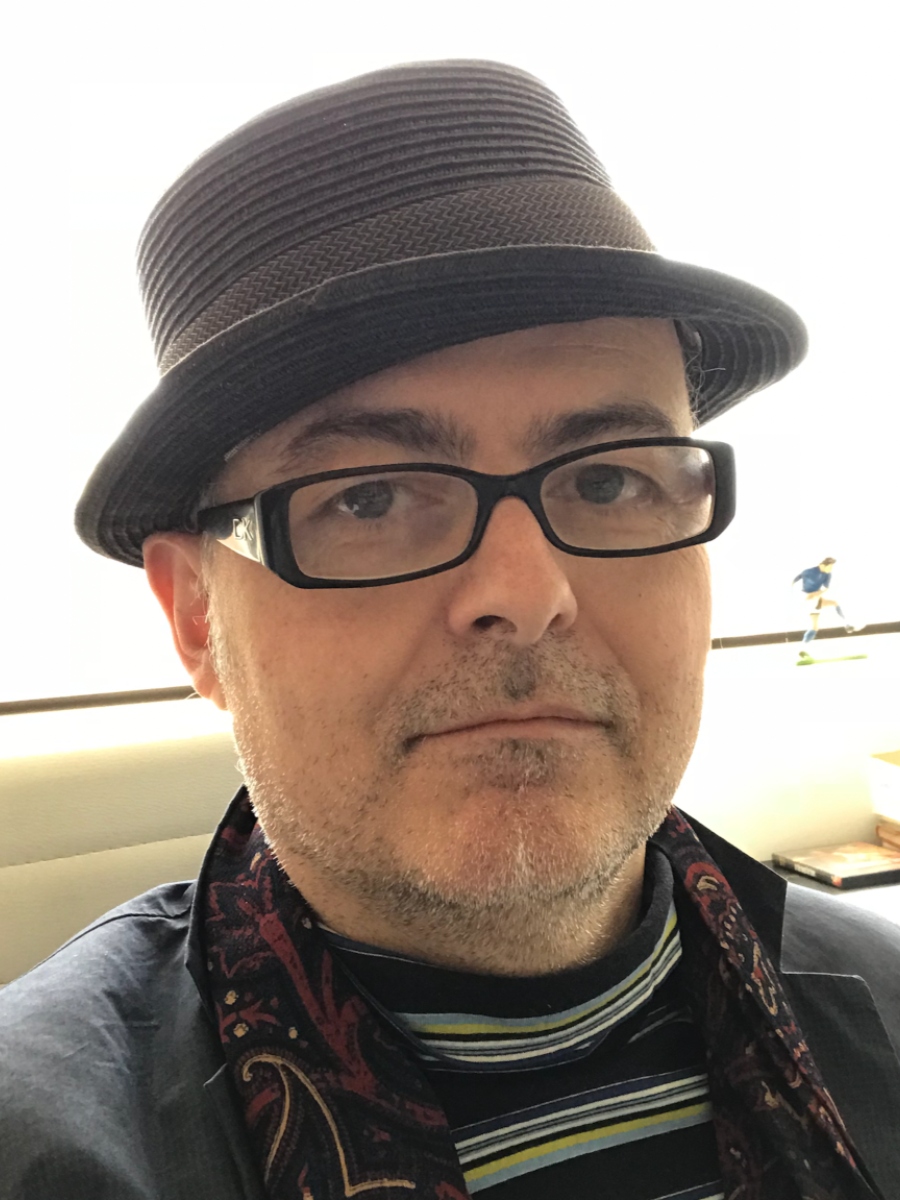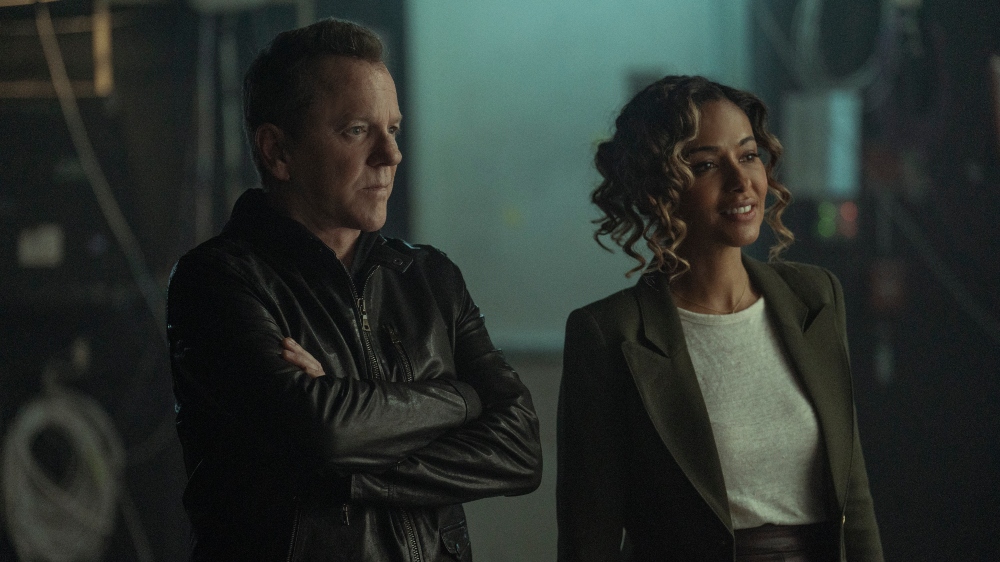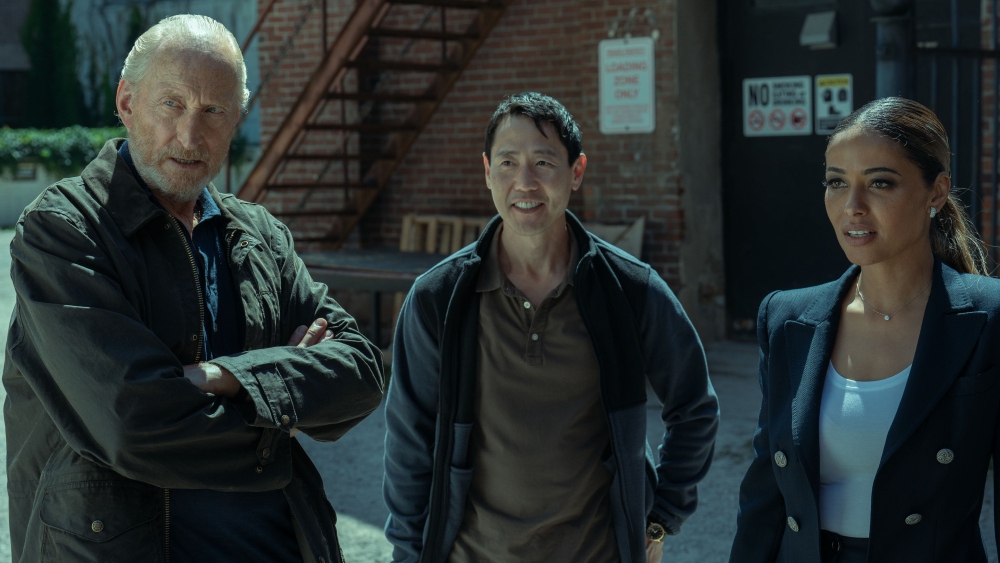The new spy series Rabbit Hole may take place in New York City, but it was actually shot in Toronto, forcing Canadian Production Designer Rocco Matteo and his team to pull a rabbit out of their proverbial hats.
Matteo was more than up to the task, of course, as he’s an industry veteran whose credits include La Femme Nikita, Covert Affairs, and Condor. It was up to him to build much of the physical world inhabited by the show’s shadowy protagonist, a corporate spy named John Weir played by 24 alum Kiefer Sutherland. Weir is not only framed for murder but he finds himself increasingly lost in the blurred lines between dreams and reality.
The Paramount+ series debuted in late March and was created by the noted screenwriting team of John Requa and Glenn Ficarra (I Love You Phillip Morris). It co-stars Meta Golding, Enid Graham, Rob Yang, Walt Klink, Charles Dance, Jason Butler Harner, and Peter Weller.
Below the Line recently caught up with Matteo for a Zoom call in which he looked back at his first professional job (Captain Power!), revealed the credit he wishes had been better received, and talked in detail about his work on Rabbit Hole. Here’s what he had to say:

Below the Line: What was your first professional job on a movie or a show?
Rocco Matteo: Wow. Let’s see. I worked in the art department for a sci-fi show in the mid-’80s called Captain Power. That was a project probably ahead of its time because it tried to involve special effects, video technology, and miniatures as a futuristic, post-apocalyptic action show. It was in conjunction with a toy company that had designed the line of action figures and toys set in that world.
BTL: What did you learn from that experience that you’ve carried with you as a production designer all these years later?
Matteo: Right away, I was introduced into a complex team collaboration [and learned that] for things to happen, there’s a real coordinated effort by a lot of different people doing different jobs, combining their skills to achieve something. Not every show was as big in the years following that project, but it introduced the idea that “It’s a big venture, making a movie, and very exciting when you can be part of a creative team.”
BTL: What was your rise through the ranks like?
Matteo: I started at the bottom as a trainee. I had a skill set that was useful and reasonable. I could draw and had been trained in design. You try to make yourself a very reliable team member. I worked my way up by working for a lot of different designers and art departments doing any design job they asked me to do. Sometimes they were elaborate sets that needed to be worked out in detail, [and] sometimes they were simpler and more of a collaborative effort in terms of logistics. Every aspect of it was, you try to make yourself indispensable to the team and prove yourself, and then you’re given more responsibility. I probably was given quite a bit of responsibility within four or five years of starting in the business.

BTL: What’s a show or a movie you worked on that was overlooked for whatever reason, or that you wish had been more successful because you were particularly proud of the production design?
Matteo: Well, that’s interesting. You look back fondly on a lot of projects. I would say there was one a few years ago that was a modern reinvention of Three Days of the Condor. Condor was a project that… I loved the idea. The level of writing was very smart, and the characterizations were really strong. I felt that it was one of those projects where you needed to be in the right place at the right time with the presentation of the work. I thought we did very strong work. It felt real, even though we created all of the environments. I felt that had it been, perhaps, a different time and a different distributor, there might have been easily more of an audience for it.
BTL: Let’s dig into Rabbit Hole. How did you find your way to this spy series?
Matteo: I had worked with a local producer on another project the prior year, something very challenging and ambitious. He had mentioned that there was a project coming down the pike that I might be interested in. I was lucky. I believe another designer might have been attached to the project before me, but circumstances allowed for me to have a meeting with the writer/directors. We bonded very quickly over movies and ideas that we both liked.
BTL: Who was that person you’d worked with before on the previous project?
Matteo: He was the local line producer, Norman Denver, and the local production team was Whizbang. They knew me, and I had finished designing a project called The Lost Symbol. We had some very complex builds and strategic things to detail on that show. They knew I was a fan of espionage and spy programs; that’s a thing that I’ve really enjoyed doing. It just so happened that an opportunity came up and it’s like, ‘Hey, can you meet these guys? Are you available?’ And I’m like, ‘Yeah. I actually just became available.’ Something else I had lined up to work on fell apart for me, so I was available and the meeting went well.
BTL: What were the biggest challenges for you on Rabbit Hole?
Matteo: The project was conceived as a road movie. Once the story starts, once it hits the ground, it literally hits the ground running. The protagonist and the action keep moving from setting to setting. We had big settings, and lots of them where we didn’t necessarily spend a lot of time in those places, but we had to be in these places for major stunts or action sequences, and we were trying to do that in a city where it was reopening from COVID.
There was a moment there when we were starting the prep of the show where it felt like, “This’ll work because these venues are not in use. Downtown is empty. We can get into places and do things that you otherwise wouldn’t do.” By the time we actually got closer to camera, we discovered that the city was rapidly reopening and I had to go to Plan B, which, in a way, I sort of enjoyed, because I got to build more.

BTL: In your career, how many times have you used Toronto, Hamilton, or other Canadian locations to fake New York City? The steps down to the subway looked convincing, and you had New York taxis, but I did catch one shot that featured green rental bikes, and the Citi Bikes in Manhattan are blue. Take me through the task of doubling New York…
Matteo: That’s always an adventure. It’s always tricky. I look for, primarily, the scale of the spaces and of the streets. Once we settle on venues where we feel like we have an expanse, a canyon, or a view that will work for the story, we get into the details. You’re trying to keep up with where the camera is going to go and what you’re going to see. You try to provide as much detail as you can and match it to a present reality.
Quite frankly, I was hoping and thought that we would do some second unit in New York, but ultimately, it wasn’t possible with the pace of our shooting schedule. I can say that I’ve probably done Washington more often than New York, but I’ve had to try to deal with New York at least 10 times over the years.
BTL: Who could you not have done your job without on Rabbit Hole?
Matteo: I’d say there’s a core group of people I always rely on. I had three strong Art Directors — Marilyn Kiewiet, Christine Gonsalves, and Sean Moore; my Scenic Artist team of Kirk Coppella and [Set Dresser] Mauro de Souza, and my construction team. My decorator, Friday Meyers, with Chris Peters, [who] I relied on a lot to counterbalance the architecture that we were building. A lot of the reality, the details that the directors were looking for, came down to her and her team. I’m quite inclusive as a designer. I like to build and I also like to work with the smaller details of decor, [so] those people are instrumental for me.
BTL: How hopeful are you about a second season?
Matteo: I’m very hopeful. The show is interesting because it’s so on point and very much about the zeitgeist of our dilemma — of finding truth within an enormous cloud of media. In some ways, perhaps the show is actually a bit disturbing for the audience. I know that audiences are attracted to it [because of] the action and the topical reality — the nature of the story — but I know that it can also be quite disturbing for you because it just reminds you of our present situation. I’m hoping that enough people stay with it. There’s some real excitement about taking the story further.
BTL: What is next for you? Do you have any other projects that you’re currently working on?
Matteo: I just finished a pilot for the Onyx Collective, [which] works with 20th Century and Disney. It’s a comedy pilot… “comedy” in the new expansive sense of the word, where it’s fun but deals with some serious issues. I just finished that and it was a lot of fun. [It was a] very interesting project to work on. It’s been in the trades. It’s a project developed by Gabourey Sidibe called 1266. There’s a great creative team there that has taken something she wrote, about her pre-stardom experiences, and developed, and turned it into a very interesting project.
Season 1 of Rabbit Hole is now streaming in full on Paramount+.





